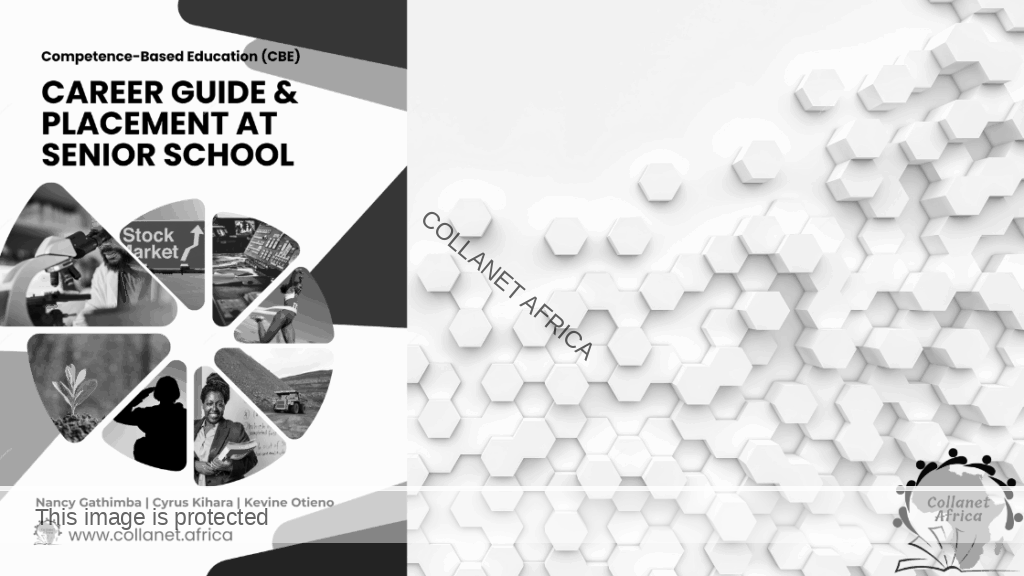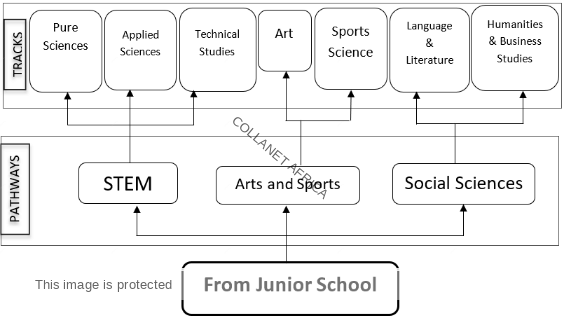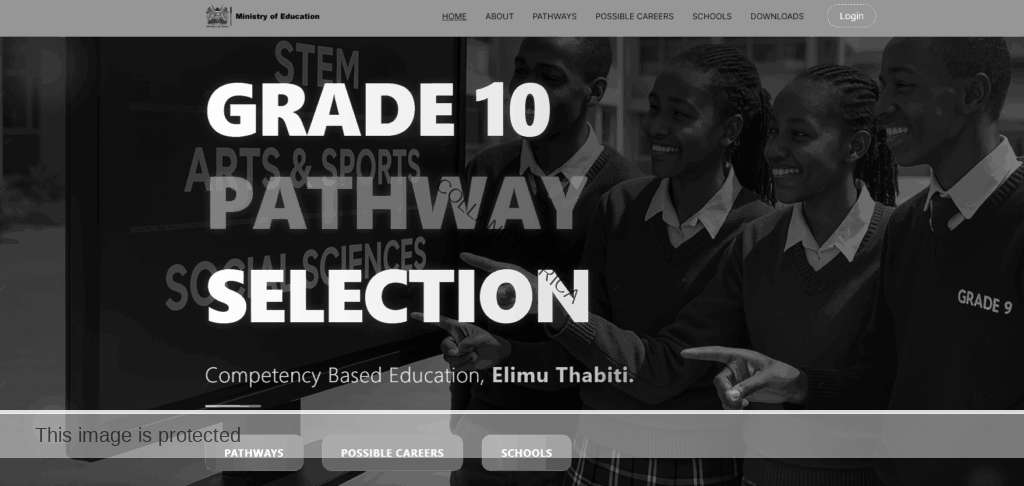
Understanding Competency-Based Education in Kenya: Pathways, Placement, and Opportunities
Kenya’s education system has taken a bold step forward with the introduction of Competency-Based Education (CBE), initially introduced in 2017 as the Competency-Based Curriculum (CBC). CBE moves away from the old focus on exams and memorization. Instead, it emphasizes practical skills, values, and competencies that prepare students for life and work in today’s world. In this post, we are breaking down the key features of CBE, career pathways, school types, placement process, and what to do if you’re unhappy with the outcome. We try to make it easy for students, parents, and educators who want to understand this system and make the most of it.
What is Competency-Based Education?
CBE is all about helping students develop skills they can use in real life, not just pass tests. It was introduced to ensure Kenyan learners are ready for the challenges of the 21st century. Unlike the old system, which focused heavily on grades, CBE aims to:
- Unlock potential: Help every student discover and grow their unique talents.
- Build values: Teach national values like patriotism, integrity, and responsibility.
- Focus on skills: Equip students with practical abilities that match industry needs.
- Prepare global citizens: Encourage students to think about global issues and contribute to a better world.
CBE is supported by laws like the Constitution of Kenya (2010) and the Basic Education Act (2013). It also aligns with Kenya’s Vision 2030 plan and the Sustainable Development Goals (SDG 4), which call for quality education for all.
Main Principles of CBE
CBE follows a few key ideas to make sure it works for every student:
- Learner-Centred: It focuses on what each student is good at, what they like, and what they want to do in the future.
- Equity and Fairness: Every student gets a fair chance, including those with special needs.
- Inclusivity: No one is left out because of their background or abilities.
- Transparency: The rules for placing students in schools are clear and open to everyone.
These principles guide how CBE is put into action, especially when students move from Junior School (Grade 9) to Senior School (Grade 10).
Vision and Mission of CBE
The CBE is driven by a vision to produce engaged, empowered, and ethical citizens capable of contributing to Kenya’s socio-economic development. Its mission is to identify and nurture the potential of every learner, ensuring they acquire essential skills and values for personal growth and national progress.
Core Competencies and Pillars
The CBE emphasizes the development of core competencies such as communication, critical thinking, creativity, and problem-solving. These are supported by foundational values, or “pillars,” including:
- Love
- Responsibility
- Respect
- Unity
- Peace
- Patriotism
- Social Justice
- Integrity
These values underpin the curriculum and guide learners in becoming ethical and responsible citizens.
Structure of Basic Education
Kenya’s basic education system under the CBE is organized into distinct stages, each with a specific focus:
- Pre-Primary: Emphasizes interaction skills.
- Primary: Focuses on socialization skills.
- Junior School: Encourages exploration of interests and abilities.
- Senior School: Prepares learners for careers through specialization.
This structure ensures a progressive development of skills, culminating in career readiness at the Senior School level.
Understanding Career Pathways

The Kenyan Competency-Based Education (CBE) offers four pathways in Senior School to match your unique talents and career goals. These pathways are designed to develop 21st century skills, preparing you for further education, work, or entrepreneurship. The Senior School curriculum has a total of 38 subjects, with four core subjects including;
- Pure Mathematics (STEM) or Essential/ Foundation mathematics (Arts & Sports Science/ Social Sciences)
- English
- Kiswahili/KSL, and
- Physical Education (PE)
Additionally, ICT and Community Service Learning (CSL) will be integrated across all subjects to enhance learning and promote digital literacy.
The rest of the other subjects are distributed across the other pathways as described below. All learners in senior school will tackle seven (7) subjects (four compulsory + three from selected pathway).
Career Pathways in Senior School
When students reach Senior School (Grades 10 -12), they choose from four career pathways. Each pathway offers specific subjects and skills that lead to different careers. Here’s a detailed look at each one, including what you can study, how you’ll learn, and the jobs you could pursue.
1. Science, Technology, Engineering, and Mathematics (STEM) Pathway
The STEM pathway is for students who love science, math, or technology. It builds skills like problem-solving and innovation. It has three tracks:
- Pure Sciences: Subjects include Physics, Chemistry, Biology, and Mathematics. You’ll do experiments and projects in labs.
- Applied Sciences: Subjects include Computer Science, Agriculture, and Home Science. You’ll apply science to everyday problems.
- Technical Studies: Subjects include Aviation, Building Construction, Electricity, Metalwork, and more. You’ll work in workshops with tools.
How You’ll Learn: Hands-on projects, experiments, science fairs, and research.
How You’re Assessed: Through practical work, projects, and exams that test your ability to think and solve problems.
Possible Careers: Engineer, doctor, IT specialist, scientist, farmer, or technician.
Higher Education: Universities or technical colleges for advanced STEM studies.
2. Arts and Sports Science Pathway
The Arts and Sports Science pathway is for creative and active students. It has two tracks:
- Arts: Subjects include Music, Dance, Fine Arts, Theatre, and Film. You’ll create performances and artwork.
- Sports Science: Focuses on Sports and Recreation. You’ll train and study physical fitness.
How You’ll Learn: Practical lessons, projects, and performances.
How You’re Assessed: Portfolios, performances, and projects that show your creativity or skills.
Possible Careers: Artist, musician, actor, sports coach, fitness trainer, or media producer.
Higher Education: Colleges or universities specializing in arts or sports.
3. Social Sciences Pathway
The Social Sciences pathway is for students curious about people, society, and the world. It has two tracks:
- Languages and Literature: Subjects include Literature in English, Fasihi ya Kiswahili, and foreign languages like French or Arabic.
- Humanities and Business Studies: Subjects include History, Geography, Business Studies, and Religious Education.
How You’ll Learn: Research, discussions, and projects about real-world issues.
How You’re Assessed: Essays, presentations, and research papers that test your thinking and communication skills.
Possible Careers: Lawyer, teacher, business manager, diplomat, or social worker.
Higher Education: Universities or colleges offering social sciences or law.
4. Stage-Based Vocational Education Pathway
The Vocational pathway is for students with special needs, focusing on practical skills for work or further training. It has four stages:
- Foundation Stage: Basic skills for beginners.
- Intermediate Stage: Builds on the basics.
- Pre-Vocational Level: Introduces work skills.
- Vocational Level: Offers 43 courses like weaving, leatherwork, or animal farming.
How You’ll Learn: Hands-on training in workshops with support from industries.
How You’re Assessed: Practical tasks and projects, with certificates for each stage.
Possible Careers: Weaver, farmer, craftsperson, or small business owner.
Higher Education: Vocational colleges or direct entry into the workforce.

Types of Senior Schools and How to Choose the Right One
Senior School in Kenya (Grades 10-12) is for learners aged 15-18 and is the final stage of basic education under the Basic Education Act, 2013. It prepares learners for tertiary education, training, or the workforce by allowing them to specialize in career paths that match their interests and abilities. The categorization process is influenced by:
- Flexibility: Students can transfer between various pathways if their interests, abilities or career aspirations change.
- Partnerships: Collaboration with industry, universities, and other institutions to enhance career and technical education at senior school.
- Infrastructure: Ensure that each category has the necessary resources (labs, studios, workshops, etc.) for optimal student development.
Schools are categorized based on four key factors: pathways, gender, accommodation and needs. Here’s a detailed breakdown:
a) Categorization by Pathways
Senior schools offer career pathways to guide learners toward their future goals. The three pathways are:
- STEM: Science, Technology, Engineering, and Mathematics.
- Arts and Sports Science: Creative arts, performing arts, and sports-related fields.
- Social Sciences: Humanities, languages, and business studies.
Schools are divided into two types based on the number of pathways they offer:
- Triple Pathway Schools: Provide all three pathways (STEM, Arts and Sports Science, and Social Sciences), giving learners maximum flexibility to explore their interests.
- Dual Pathway Schools: Offer two of the three pathways, focusing on specific combinations (e.g., STEM and Social Sciences).
b) Categorization by Gender
Senior schools are categorized based on the gender of the learners. The two categories are:
- Single Gender: Either girls’ school or boys’ school.
- Mixed Gender: Both boys and girls learn together in the school.
c) Categorization by Accommodation
Schools also differ based on where learners stay while studying:
- Day Schools: Learners attend classes during the day and return home afterward. Best for students living near the school.
- Hybrid Schools: Offer both day and boarding options, allowing learners to either live at school or commute daily.
Specific Categories of Senior Schools
Combining pathways and accommodation, there are five main types of senior schools:
- Triple Pathway Day Schools: Offer all three pathways; learners are day scholars.
- Dual Pathway Day Schools: Offer two pathways; learners are day scholars.
- Triple Pathway Hybrid Schools: Offer all three pathways; learners can be day scholars or boarders.
- Dual Pathway Hybrid Schools: Offer two pathways; learners can be day scholars or boarders.
- Special Needs and Vocational Schools:
- Special Needs Schools: Designed for learners with disabilities, offering tailored education and support.
- Vocational Schools: Focus on practical skills for learners following a stage-based vocational education pathway, preparing them for immediate work or further training.
d) Categorization by Needs
Senior schools are categorized based on the gender of the learners. The two categories are:
- Special Needs School: Catering to learners with hearing impairment, visually impaired or have physical impairment.
- Vocational School: Catering to learners with autism, cerebral palsy, cognitive difficulties and deaf blind.
How Placement Works for Grade 10
Moving from Grade 9 to Grade 10 involves a clear process to place students in the right pathway and school. No learner will be denied opportunity to join senior school. Placement will be based on:
- Learner’s Choice: Pathways, tracks, subject combinations and schools.
- Merit: Learner academic performance in Grade 9 (KJSEA + SBA) assessment.
- Psychrometric Tests: Learner aptitude, interest and talent identification done by KNEC and by the school.
- Equity: Regional balance to ensure fair access to all learners.
- School Capacity: Availability of space and resources in the schools applied for.
Subject Clusters
The table below highlights the cluster of learning areas for placement. Make sure to understand the cluster of learning areas at Junior School because they will directly influence your placement at Senior School.
| Pathway | Track | Subjects at Senior School | Cluster of Junior School Learning Areas |
| Social Science | Language and Literature | Literature in English, Fasihi ya Kiswahili, Sign language, Arabic, French, German, Mandarin Chinese and Indigenous languages | 1. English 2. Kiswahili/Kenya Sign Language (KSL) 3. Any other learning area |
| Humanities | Religious education (CRE/IRE/HRE), History and Citizenship, Business Studies and Geography | 1. Social Studies, 2. Religious Education, 3. Pre-technical studies | |
| Arts and Sports Science | Arts | Music and dance, Theatre and film and Fine Art | 1. Creative Arts, 2. Social Studies, 3. Any other learning area |
| Sports Science | Sports and Recreation | 1. Creative arts, 2. Integrated science, 3. Any other learning area | |
| STEM | Pure Science | Mathematics, Chemistry, Physics, Biology | 1. Integrated Science, 2. Mathematics 3. Any other learning area |
| Applied Science | Agriculture, Computer, Home science | 1. Agriculture, 2. Pre-technical studies 3. Any other learning area | |
| Technical Studies | Aviation, Building construction, Electricity, Power mechanic, Metal work, Woodwork. | 1. Pre-technical Studies, 2. Mathematics 3. Any other learning area |
Grading Rubric
Grade 9 assessment will comprise 20% KPSEA, 20% SBAs in grades 7 and 8, and 60% summative evaluation at grade 9 (KJSEA). The assessments are evaluated on an 8-point achievement scale as highlighted in the table below:
| Performance Level | Actual Performance Level | Points |
| Exceeding Expectation | Achievement Level (AL) 8 | 8.0 |
| AL7 | 7.0 | |
| Meeting Expectation | AL6 | 6.0 |
| AL5 | 5.0 | |
| Approaching Expectation | AL4 | 4.0 |
| AL3 | 3.0 | |
| Below Expectation | AL2 | 2.0 |
| AL1 | 1.0 |
Other Metrics for Pathway Assessment
In order to correctly capture the learner’s interests, skills, aptitudes, values and personality traits, a comprehensive assessment will be done to help the learners explore and map their pathways at senior school. This will be achieved through:
- Observation Checklists: Teachers use checklists to assess learners’ skills, behaviours and learning preferences.
- Career Portfolios: Teachers use learners’ portfolios to assess appropriate pathways.
- Career Inventories: Teachers use these to evaluate learners’ skills and strengths.
- Questionnaire: Teachers use structured questionnaires to assess learners’ career interests.
- Narratives: Learners are guided to reflect on their pathways, experiences and aspirations.
Teachers will use RIASEC model during the assessments and evaluation. The model is described as:
- Realistic (R)- Loves working with tools, hands, manual (doers).
- Investigative (I), – Loves working with ideas and solving problems (thinkers).
- Artistic (A) – Love and enjoy expressing themselves through drama, music, or writing (creators).
- Social (S) – Loves working with people, to help and teach others (helpers).
- Enterprising (E) – Loves and enjoy leading and persuading others, managing projects (influencers).
- Conventional (C) – Loves order, math, neatness, planning and organized (organizers).
Picking a School
When picking a school, consider:
- Pathways: Does the school offer the career path you’re interested in?
- Accommodation: Do you prefer a day school near home or a boarding option?
This categorization helps learners and families choose a senior school that fits their educational and lifestyle needs, setting the stage for success in their chosen fields. Here’s how the placement process works:
- Choosing Pathways and Schools:
- In Grade 9, students pick their pathway during registration for the Kenya Junior Secondary Education Assessment (KJSEA).
- They choose based on their interests, grades, and teacher advice.
- Students select 12 schools: 7 for their first-choice pathway, 3 for their second choice, and 2 for their third choice. This includes 9 boarding schools (4 from their home county, 5 from outside) and 3 day schools in their area.
- Automated Placement:
- A computer system matches students to schools using their preferences, academic performance, and school capacities.
- Top performers in each pathway may get placed in boarding schools, while others go to day schools based on their choices.
- Special rules ensure fairness, like limiting how many students from one Junior School go to the same Senior School.
- Special Cases:
- Students with special needs are placed in schools that fit their choices and abilities.
- Refugee students and students from private centres follow the same process.
Pre-Select Schools
Certain schools, termed “pre-select schools,” can admit learners before the main placement process based on specific criteria.
- Details:
- These schools must meet Ministry of Education standards.
- They pre-select learners who have chosen to join them before KJSEA results are out.
- Pre-selection occurs outside the automated system but aligns with learner preferences.
- Benefit: Offers flexibility for schools with unique admission policies while respecting learner choice.
Learners from Refugee Camps and Private Centres
Refugee learners are placed alongside other learners; they form part of the selection lot and will not affect the host Sub-county’s quota. The centres can maintain private or public status. The United Nations High Commissioner for Refugees (UNHCR) will issue the students with identification documents and passes as necessary.
Learners from private centres will be placed in day schools on a pathway of their choice based on their performance, interest and personality.
What to Do If You’re Not Happy with Your Placement
Learners who fail to secure places in the schools of their choice will be placed in schools offering pathway and subject combination of their choice. If you or your parents don’t like the school or pathway you’re assigned, there’s a way to appeal:
- File a Complaint:
- Talk to your Junior School headteacher, who will help you contact the County Director of Education (CDE).
- Fill out a form available on the Ministry of Education website with your concerns.
- Appeal Process:
- Submit the form and any proof (like grades or teacher notes) to support your case.
- The Ministry of Education reviews it and decides based on the rules.
- Replacement Option:
- If you want a different school, request a replacement through your Junior School head on the Kenya Education Management Information System (KEMIS).
- This must be done at least 2 weeks before Grade 10 starts. Approvals depend on available spots.
The CDE and school principals help with this process, ensuring your voice is heard.
Career Guidance and Counseling
Career advisory services shall be offered to help learners transition smoothly into Senior School by guiding them toward informed pathway choices based on their interests, strengths, and career goals.
- Pathway Introduction: Learners explore Senior School tracks, aligning them with their personal interests and future aspirations.
- Career Readiness: Skill development workshops, leadership programs, and extracurricular activities boost learners’ preparedness for their careers.
- Pathway Selection: Guidance sessions support learners in choosing Senior School pathways that suit their strengths and ambitions.
A Career Guidance Committee, chaired by the deputy head and including heads of learning areas, oversees the process. Their responsibilities include:
- Promoting career awareness and exploration
- Assessing and counseling learners
- Engaging parents and teachers
- Supporting the transition to Senior School
- Monitoring learners’ career progress
CBE Career Guide & Placement at Senior School
A complete compact guide highlighting:
- Clear pathway navigation and career guidance
- Practical strategies for placement at senior school
- Holistic skill and character development
Key People Involved
Several officials make sure the placement process runs smoothly:
- Cabinet Secretary for Education: Oversees the whole operation and reports to Parliament.
- Principal Secretary: Manages daily operations and advises on policies.
- Director General: Handles technical details of placement.
- Head of Directorate of Senior Schools: Coordinates the selection and answers national queries.
- Regional Directors of Education (RDEs): Check school capacities and approve replacements.
- County Directors of Education (CDEs): Manage placement at the county level and handle complaints.
- Sub-County Directors of Education (SCDEs): Work with schools to ensure all students are placed.
- School Principals: Report vacancies and admit students.
These leaders work together to ensure every student finds the right place.
Where to Find More Information
For extra details, check these resources:
- Ministry of Education Website: www.education.go.ke – Guidelines, forms, and updates.
- Kenya National Examinations Council (KNEC): Info on assessments like KJSEA.
- National Education Management Information System (NEMIS): School data and placement results.
Conclusion
Competency-Based Education in Kenya is a forward-thinking system that puts students first. By focusing on skills and offering clear pathways (STEM, Arts and Sports Science, Social Sciences, and Vocational Education) it opens doors to exciting careers. The placement process ensures fairness, and there’s support if things don’t go as planned. With the right information and guidance from key figures like principals and education directors, students can confidently step into Senior School and beyond.










Responses